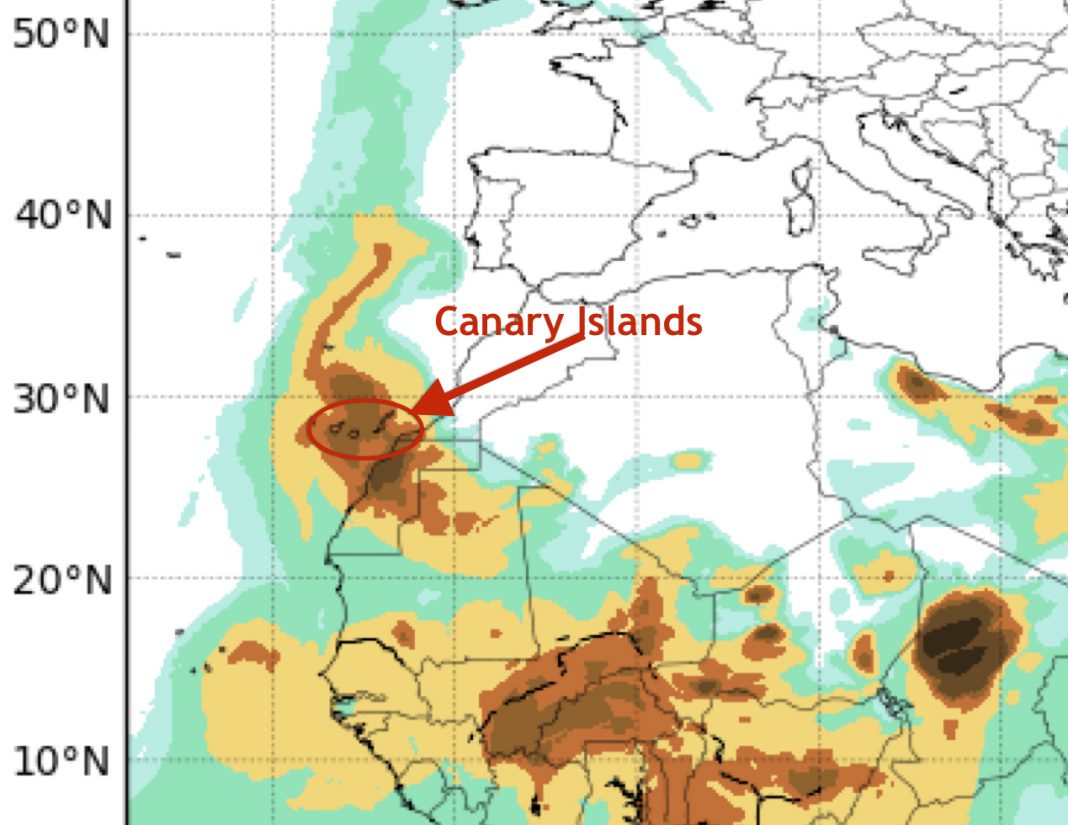Expats in Spain and the Canary Islands will often hear the words “Oh, it’s just a calima” trotted out whenever it is a little cloudy or there is annoying dust in the air. In reality, it is not quite as simple as that, and the true calima is something to be celebrated, as well as to curse, particularly if you suffer from breathing conditions and respiratory allergies.
In the Canary Islands, the calima is often referred to as “Bruma Seca”, which is “Dry Fog”. It appears for up to ten times each year for a day or two, but in the worst cases, can be present for a week, or even longer.
People with respiratory problems and allergies often suffer considerably during these periods. It is a time when sensible people try to stay indoors or wear a face mask when going outside for any length of time if they suffer from breathing conditions.
Calimas are usually, but not always, accompanied by very hot winds, and humidity levels increase. Residents are plagued with reddish dust on their patios and cars, which also invades every crevice of their homes. A calima occurs when dust from the Sahara Desert is dragged across landmass by strong winds. Dust can remain suspended for hours and even days; visibility is reduced and the air becomes cloudy as a result of the dust.
The Canary Islands are often regarded as having the “best climate in the world”, but we are not immune from the devastating effects of calimas. The intensity of heat on the islands increases respiratory problems and allergies, as well as general oral health. The tiny particles of dust generated irritates the mucous membranes, which can have serious implications for oral health.
Often, as a result of taking antihistamines to control allergies, the immune system fills the hollows of our head with mucus. The cavities that are located above the mouth cause pain and greater sensitivity to cold and heat when filled with mucus, because of increased pressure upon the upper teeth.
Calimas are not all bad, since the Central Sahara was a lake in prehistoric times. The dry sand contains fertile remains of its once rich, organic particles. These nitrogen-rich components within a calima help to fertilise the Atlantic Ocean by promoting the growth of phytoplankton, which forms the basis of the food chain that allows all sea creatures to survive and thrive.
Climate change scientists believe that the greenhouse effect is minimised, because the sea’s micro-organisms absorb harmful carbon dioxide from the atmosphere. In other words, the more phytoplankton in the sea, the less carbon dioxide in the air. However, it is a delicate balance and too much dust in the Atlantic could create too much plankton and areas of low oxygen, which is not so good.
According to researchers, calima dust from the Sahara also helps to feed plants in the Amazon, since it acts as a fertiliser, which helps the rain forest to grow and thrive. There are also other complex interactions linking calimas to events that we do not yet fully understand.
Some studies claim that the damage of hurricanes is reduced due to the effect of calimas cooling the water temperature that is needed for hurricanes to build. Around one third of the natural soils that make up the Canary Islands are based upon Saharan dust that has dropped on the islands over millennia. The rich, fertile soils on these islands have been enriched through the effects of the calima.
Many suffer from the health effects of the calima, or complain about the dust that has landed on their patios and cars. Maybe we should instead be grateful that it is feeding the luscious plants in the Amazon rain forest, fertilising the Atlantic Ocean for sea creatures to survive, as well as reducing the greenhouse effect that has such serious implications for us all.
If you enjoyed this article, take a look at my websites: http://barriemahoney.com and http://thecanaryislander.com or read my latest book, ‘Living in Spain and the Canary Islands’ (ISBN: 9780995602724). Available in paperback, as well as Kindle editions.
Join me on Facebook: @barrie.mahoney
© Barrie Mahoney





